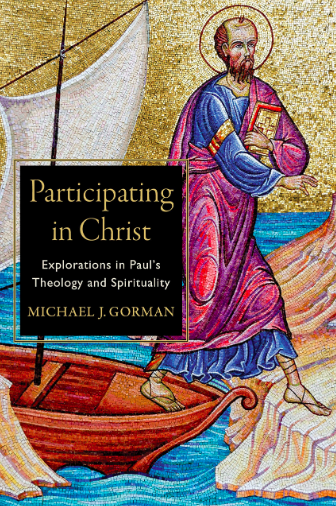 Geoff Holsclaw is Affiliate Professor of Theology at Northern Seminary, and Director of their new Masters in Theology and Mission. You can also follow Geoff on Twitter and Facebook.
Geoff Holsclaw is Affiliate Professor of Theology at Northern Seminary, and Director of their new Masters in Theology and Mission. You can also follow Geoff on Twitter and Facebook.
The Trinity (by Nature) Is Freedom
Does God love us because God has to, or wants to? Is God free to love us? Or is God compelled to love us?
These questions create the background of concern for Paul D. Molnar‘s chapter in Two views on the Doctrine of the Trinity. Last time we talked about Stephen R. Holmes’ “classical” view of the Trinity, and Molnar essentially builds on this view but with a more polemical edge.
Classical Definition
Molnar starts by stating his commitment the Nicene-Constantinoplitan Creed, that in the Father, Son, and Holy Spirit there is “One Godhead, Power and Being of the Father, of the Son, and of the Holy Spirit, equal in Honour, Majesty and eternal Sovereignty in three most perfect Subsistences [hypostasesin], that is, in three perfect Persons [prosopois].”
For Molnar this entails several basic commitments.
1) The Three Persons are fully One God
2) God is Triune without and before creating or redeeming the world.
3) Or again, God in God’s self is not constituted by actions in the economy of creation and redemption.
As Molnar stresses throughout, God is Triune by nature (or substance, or essence, or whatever most basic category you prefer), but God creates and redeem in freedom. Molnar, as with Holmes, stresses that discussion of God’s nature or essence (“what” God is) is generally directed toward preserving mystery as a control over our ever-ready idolatrous language, looking for a way to fashion God in our own image. The emphasis on divine unity in classical formulas, therefore, was to safeguard mystery, not suppress diversity.
Knowing Too Much
Throughout much of the chapter Molnar takes aim at “social Trinitarian” construals of the Trinity because these start from human life-in-relationship (often “love”) as a clue to understanding the triune life of God. He sees this as problematic for several reasons (somewhat scattered throughout the chapter): 1) Molnar fears we will end up dissolving the mystery of the Trinity (we will say too much) in our own understandings of relationality. Arguments of take the shape of “Because love looks like this and feels like this and acts like this for us, so too must the Trinity.” We end up describing the inner life of the Trinity in terms borrowed from our experience. 2) Molnar worries that all we are really doing is projecting onto God our experiences. 3) And lastly, when we project our experiences we often reduce the “immanent” Trinity into the “economic” Trinity and therefore historicize the Trinity (again, Molnar doesn’t always explain why this is bad, he just states that it is bad).
Freedom Lost? Love Lost?
So why does it matter that we not import or project our categories of relationality into the Trinity? Well, Molnar does give one clear answer: Because too often we lose the freedom of God.
Starting with the Father-Son relationship, if we import our understanding of love (as “making room for another” a-la Moltmann), then part of the definition of Triune love seems also to include creation, for otherwise God would not be as loving as God could be by keep God’s own love within God, not others. If God only creates room within God for God (Father, and Son, and Spirit), then there is still no making room for the other because the Trinity is not really “other” but is the “same” as God. Therefore, for God to truly “make room for another” God would have to create the world as an expression and true fulfillment of love.
Molnar worries that while this sounds nice (and loving) what we have actually done is argue that God is compelled to love us (by basing it in his nature) rather insisting on God’s freedom to love us. God’s love should be understood as a “super-abundance” (something we can’t quite understand), but instead God’s love is now thought as “self-limitation”. Of course this conversation must be driven toward what Scripture thinks of love (which is often lacking all around), but Molnar worries that this type of projection of love (from our experience to God’s inner life) results in various heresies (modalism, panentheism, patripassianism, etc.), and often fails to uphold Christological categories of unity and distinction of the divine/human nature of Jesus (but that is for another blog series). All that to say, I agree with Molnar that often times strong understandings of the “social Trinity” often seem to require suffering and the fall in order for God to be truly loving, to actually be Trinity (which is pure Hegelianism, which is bad, but like Molnar I won’t explain why [wink]).
Sum Up
So Molnar desires to maintain the freedom of God to love us (in grace) by securing the Trinity of persons within the one nature of God, a Trinity that is Triune without and before creation and redemption (to ensure the gracious gift of both). All in all, Molnar’s chapter will convince the convinced, but probably won’t persuade those who long for a more relational understanding of the Trinity.
The second half of the book explores two examples of a more “relational” understanding of the Trinity, examples that seem to have learned from the excesses of some “social Trinitarian” models. To those we will turn next time.











